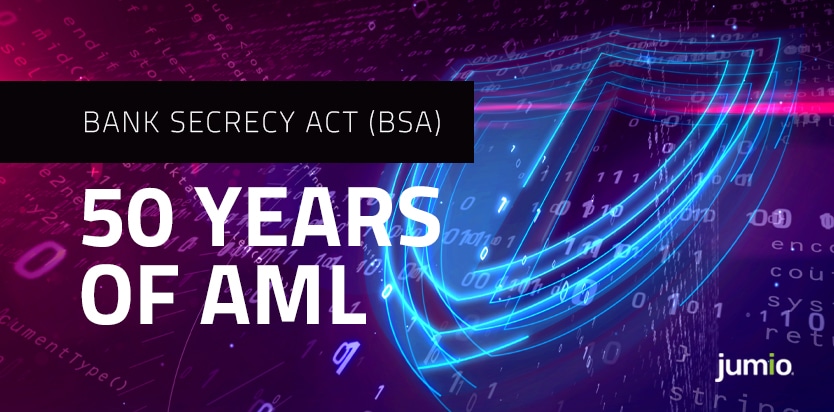
The Bank Secrecy Act (BSA) is celebrating its 50th birthday today. Established on October 26, 1970, it has become one of the most important anti-money laundering (AML) tools in the United States and has set the pace for worldwide AML efforts. Let’s take a look at how it’s changed over the five decades since its inception to keep up with the changing face of money laundering.
The ’70s: Organized Crime
In 1970, AML efforts were primarily aimed at stopping organized crime by preventing them from depositing large quantities of cash without it being reported to the government. To address this problem, the BSA required banks to report cash transactions over $10,000 using the Currency Transaction Report (CTR). It also required banks to properly identify persons conducting transactions and to maintain a paper trail by keeping records of financial transactions. This law was controversial and challenged in court, but it was upheld.
The ’80s: The War on Drugs
By the late ’80s, criminals had figured out how to work around CTRs through structuring, or making multiple deposits under $10,000. And with the focus now on the war on drugs, the U.S. needed to step up its efforts to stop drug money from flowing through the financial system. The Money Laundering Control Act of 1986 prohibited structuring, made money laundering a federal crime, and required banks to do a better job of establishing and monitoring their compliance programs.
As a result, drug dealers started moving money by buying expensive cars and real estate. So two years later, the Anti-Drug Abuse Act required car dealers and real estate agents to file CTRs just like banks. It also required identity verification of anyone buying a monetary instrument over $3,000.
The ’90s: The Birth of FinCEN
Not surprisingly, criminals kept evolving, and the BSA followed suit. The Financial Crimes Enforcement Network (FinCEN) was formed in 1990 to provide a government-wide, multi-source intelligence and analytical network to support the detection, investigation and prosecution of domestic and international money laundering and other financial crimes. In May 1994, its mission was broadened to include regulatory responsibilities.
There were three new acts passed in the ’90s that expanded the BSA. These acts established the Suspicious Activity Report (SAR), strengthened identity verification and record-keeping requirements, targeted money service businesses specifically, and even required the U.S. government itself to create a National Money Laundering strategy.
The 2000s: Terrorism Takes Center Stage
In the new millennium, the U.S. experienced terrorism first-hand with the attacks of 9/11, and suddenly terrorist financing replaced drug money as the primary target of AML measures. The hijackers had been able to open accounts at U.S. banks such as SunTrust and Bank of America using their real names and passports. Clearly, the system had failed.
The USA PATRIOT Act vastly expanded the scope of AML and took aim at businesses that transact with foreign companies and individuals. Customer Due Diligence, including watchlist and sanctions screening, became the important new focus of AML compliance programs.
The Future of AML
Since 9/11, FinCEN has continued to strengthen and expand AML laws, such as requiring reporting by jewelers, casinos, broker-dealers and insurance companies. It has also drastically increased fines; in 2014, for example, BNP Paribas was assessed an $8.9 billion penalty. FinCEN has grown to about 300 employees and collaborates with countries around the globe to stop money laundering.
But the most important evolution in AML has been the advent of digital solutions. Companies can now verify the identity of their customers with a selfie, detect falsified documents and ensure their customers are not on watchlists more easily than ever before. And advanced transaction monitoring solutions using artificial intelligence allow firms to easily spot suspicious activity and to reduce false positives through machine learning.
Today, the Bank Secrecy Act is much more comprehensive and powerful than its humble beginnings 50 years ago. As criminals hide in the shadows of the internet, move into cryptocurrency and get better and better at falsifying identifications, Jumio is proud to be on the frontlines helping companies ensure they meet the stringent regulatory obligations of the BSA and do their part to stop financial crimes.
